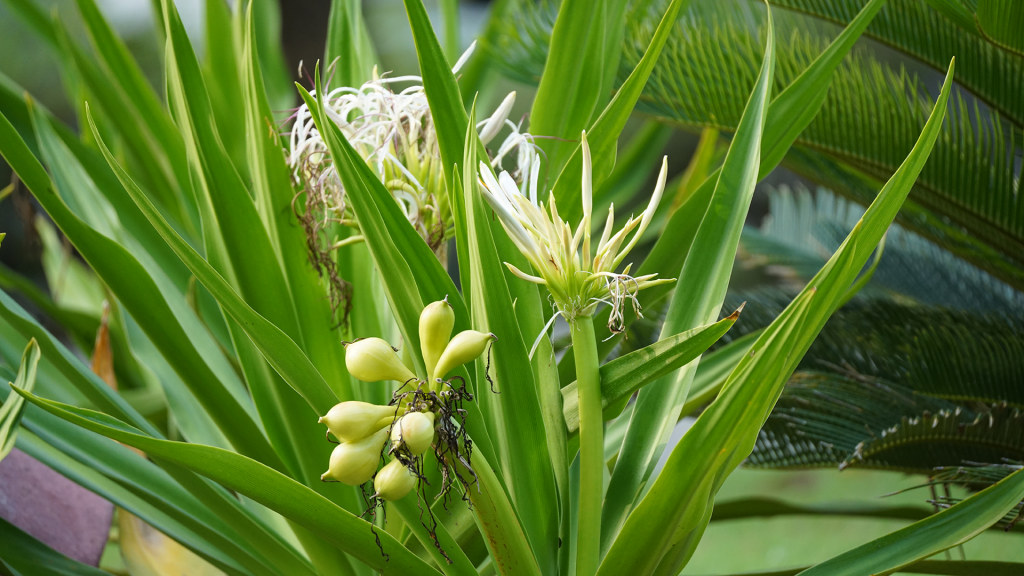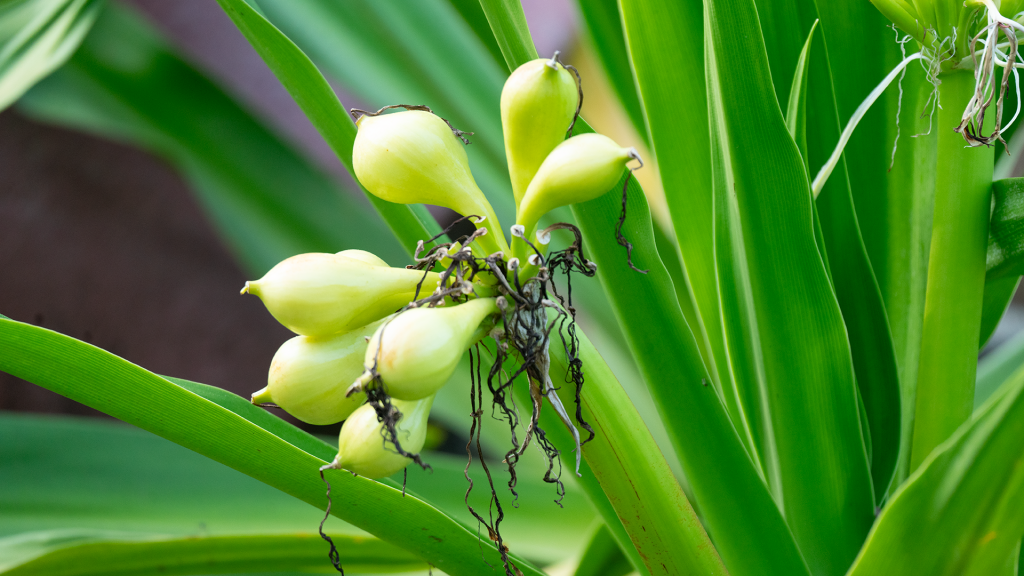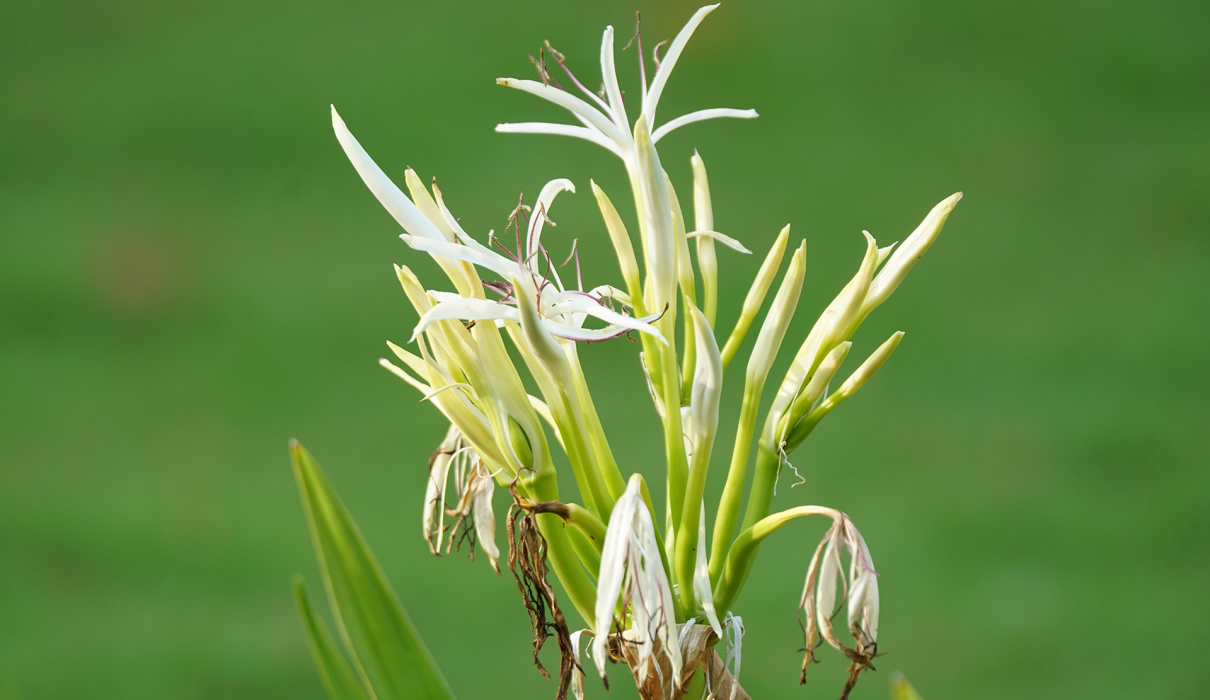The Maa Kandholhu, also known as the Poison Bulb Tree, is a common tree in the Maldives. Scientifically classified as Crinum toxicarium Roxb. and belonging to the Amaryllidaceae family, it is recognized by its Dhivehi local name “Maakandholhu” and English name “Poison Bulb.”
Description:
- Bulbous Herbs: The plant features bulbous structures, with a globose bulb measuring approximately 12×10 cm, and a neck ranging from 10 to 20 cm.
- Leaves: Clustering from the apex of bulbs, the leaves are oblong, flat, coriaceous (leathery), glabrous (hairless), narrow at the base, with an entire margin, and a gradually tapering apex. They measure 70-100×1.5-8.5 cm.
- Scape: The plant has a scape that can grow up to 30 cm long, with umbels ranging from 10 to 17 cm, bearing 20-50 flowers.
- Flowers: The flowers are salver-shaped, with a tube up to 10 cm, white lobes measuring 7×1.2 cm, and filaments up to 4.5 cm. The plant flowers and fruits throughout the year.
- Distribution: Native to tropical and sub-tropical Asia, it is found in the tropics and subtropics, including the Maldives where it occurs occasionally in natural habitats and homesteads.
Uses:
- The leaves and roots of Maa Kandholhu are utilized for their diaphoretic, emetic, and purgative properties.
- The plant is employed in treating inflamed joints and sprains, and the bulb is used as a rubefacient in rheumatism.
- Bruised leaves serve as an insect repellent.
Crinum Asiaticum (Poison Bulb): Crinum asiaticum, commonly known as the Poison Bulb, Giant Crinum Lily, Grand Crinum Lily, or Spider Lily, is a bulb-forming perennial. Widely planted as an ornamental, its large, showy flowers are admired by gardeners. However, caution is required as all parts of the plant are toxic if ingested, and exposure to sap may cause skin irritation.
Description:
- Appearance: A perennial herb reaching up to 1.2 m tall, with a spherical pseudobulb and lanceolate leaves.
- Inflorescence: The plant produces an umbel with 10-24 aromatic flowers, featuring six petaloid tepals.
- Toxicity: The entire plant is toxic, especially the bulb, containing alkaloids like lycorine and tazettine. Ingestion can lead to severe symptoms and even death.


Uses and Toxicity:
- Indigenous people, like the Tao in Taiwan, use slices of its stem as bait for fishing nets.
- The Paiwan and Puyuma peoples use the plant as a natural boundary marker.
- The plant is toxic, causing vomiting, abdominal pain, diarrhea, and, in severe cases, nervous system paralysis and death.
References:


